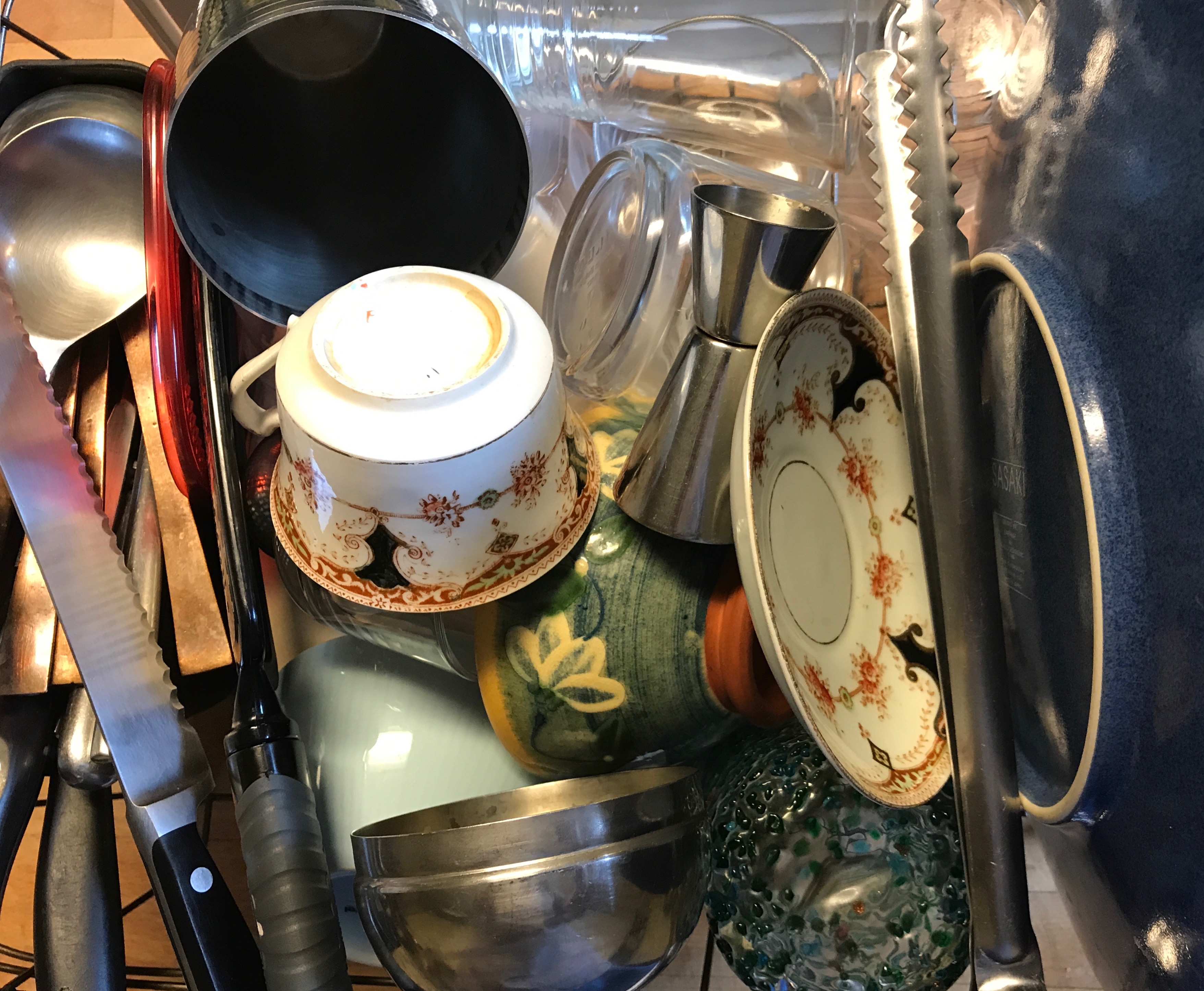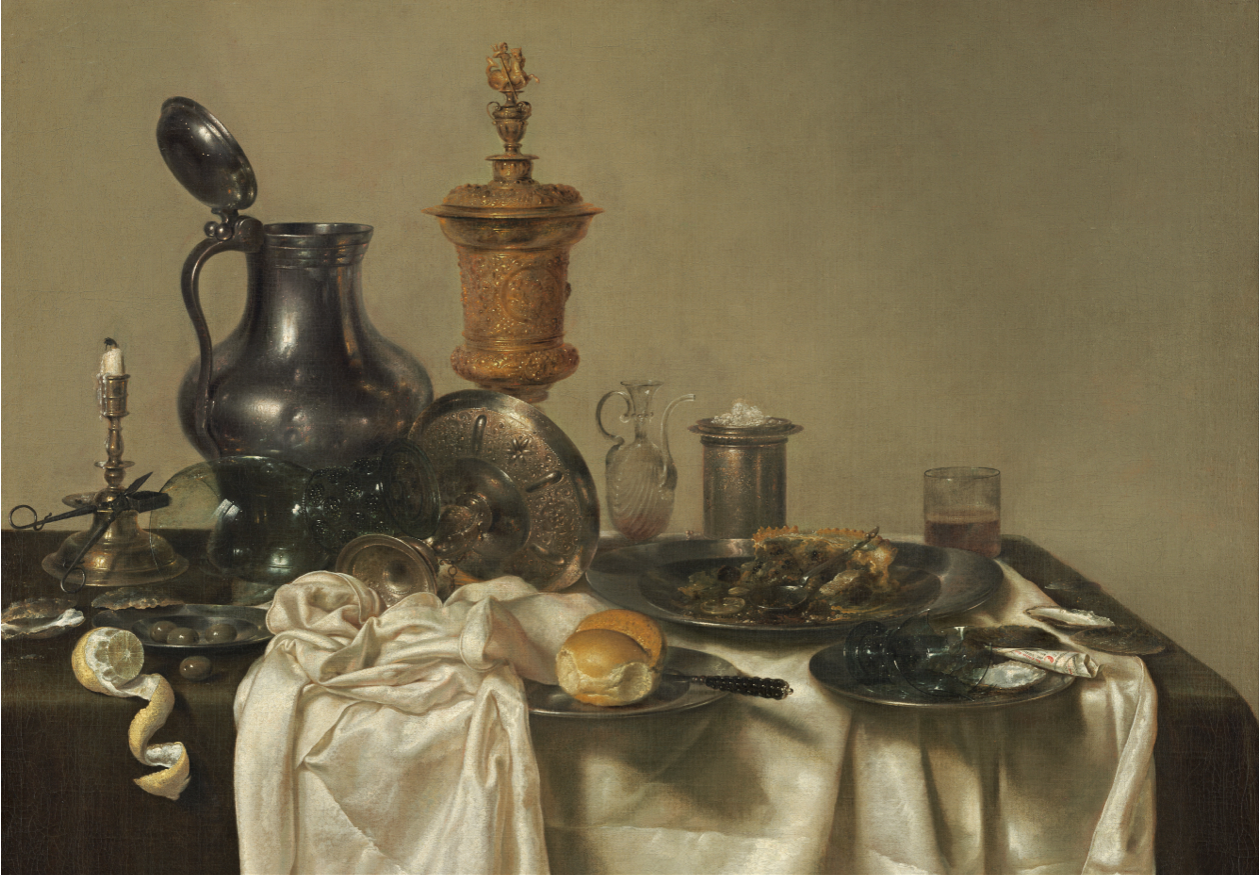Dish rack as object d’art. You barely finished a wonderful dinner and already fear the drudge of cleaning up pots and pans, dishes, and cutlery. While most of us rely on the modern convenience of a dishwasher -registered in 1850 and to only became part of the standardized US kitchen utilities in the 1950’s, I like to wash dishes the old-fashioned way.
The dish rack…
I will confess that this pleasure seems unsustainable but far better than using disposable dishes, or worse, running a half empty dishwasher. Washing dishes by hand offers me peace of mind and a welcome diversion to reflect on the day’s activities. One evening, my gaze was drawn to the piled dishes, which led me to a number of thoughts.
First, I noticed that I had unconsciously created a composition that resulted in the careful disposition of dishes and utensils in order not to break them. Dishes were carefully set vertically in the assigned slots, the cutlery to the left in the appropriate plastic bucket and, on top, if space permitted, miscellaneous items including glassware, larger mixing bowls, and anything that did not fit nicely on the dish tray.
Second, similarly to the famous still-life iconographies that had a revival in the Protestant Low Countries around the 17th century, each of my paintings of dishes represented a visual history, albeit contemporary, of what went into creating a meal, be it breakfast, lunch or dinner, or a simple snack with an appetizing cheese platter. These visual portraits illustrated the energy of cutting and chopping, measuring, sifting and mixing carefully each ingredient; not a meager task, especially when you bake.
Third, I became aware that the accumulated items on each tray represented utensils and culturally defined customs of cooking, eating, and dining. Most importantly, they expressed the changes and aspirations of society through time. Case in point, I could spot a vintage porcelain tea cup created in occupied Japan (chinaware has been traded with Europe since the 13th century) placed next to a handmade bowl designed by an architecture student, and an IKEA glass fabricated in the Czech Republic showing how the democratization of design has become part of our lives.
All of these items are juxtaposed with mundane yet essential utensils and wooden spoons, tongs, a can opener, garlic press, microplane grater, Bakelite juicer, and stainless-steel mixing bowls, to name a few. And, to boot, I love to see some of my first pots and pans express their usage over decades; they are wonderful companions and the indispensable work horses of our kitchen.
Conclusion
While it has become difficult to not be conscious of one’s desire to now place dishes artistically in the drying rack, I love to think that something that was so uninteresting could be a result of a desire to create a memorable dining experience -something that contemporary dishwashers could never offer to an acute observer of the everyday.
Willem Claesz Heda, Dutch, 1593/1594 – 1680, Banquet Piece with Mince Pie, 1635, oil on canvas, Patrons’ Permanent Fund. National Art Gallery in Washington, DC. (From Wikimedia Commons)
For additional images on still-lives of dishes, visit atelierdehahn



